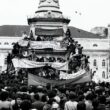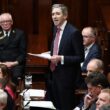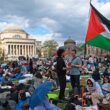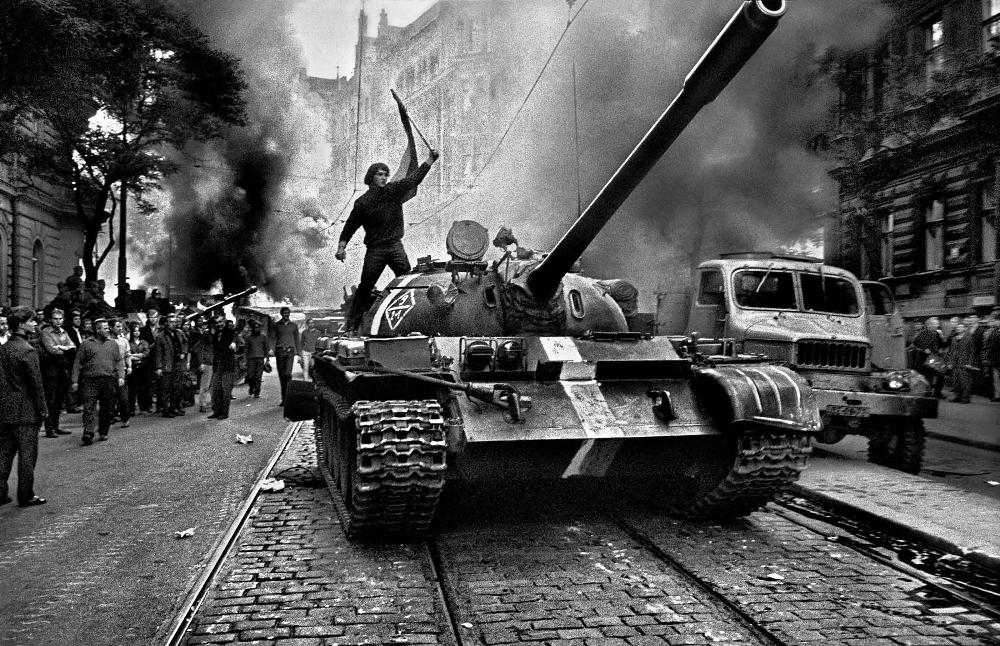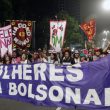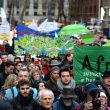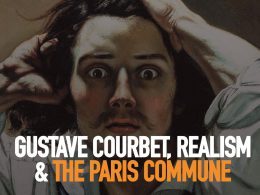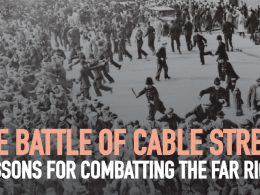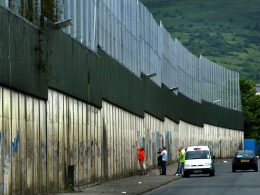This year marks the 50th anniversary of the Prague Spring when the rule of Stalinism in Czechoslovakia and in the entire “Eastern Bloc” was threatened. Solidarity TD and Socialist Party member Mick Barry looks at the lessons of these explosive events.
On August 20 1968, 250,000 Warsaw Pact troops and 2000 tanks invaded Czechoslovakia under the direction of the Soviet high command to crush the “Prague Spring”. History books tell us the invasion was organised to block liberal reform measures introduced by a modernising wing of the Czechoslovakian Communist Party (CP) led by Alexander Dubcek.
However, the real fear of the Soviet leaders who ordered the repression was that Czechoslovakian workers were beginning to take advantage of the split in the ruling party to go much further towards genuine socialist democracy and to challenge the rule of the Stalinist elite altogether.
1968 was a year of revolution worldwide. In the “Third World” the Pakistani dictatorship was rocked by worker and student general strikes and US Imperialism was stunned by the resistance of the Vietnamese people. In Western Europe, France was paralysed by a general strike which brought the country to the brink of socialist revolution. In Northern Ireland the civil rights movement openly clashed with the unionist state and a strong socialist current emerged within it.
In the Eastern Bloc, Stalinism was terrified by this international revolt and the increased stirrings of the Czechoslovakian masses. A revolt in Czechoslovakia, which put the working class in power, would have undermined all the Stalinist regimes and given a powerful impetus to socialist revolution in Western Europe. Like the Hungarian workers in 1956, the Czechoslovakian masses tended to look leftwards towards a political revolution against the ruling dictatorial bureaucracy, and towards workers’ control, rather than to a counterrevolution which might restore capitalism.
What is Stalinism?
To understand the Czechoslovakian events we need first look briefly at the character of the regimes in both Moscow and Prague. In 1917 the Russian working class took power and established a democratic workers’ state. Its leaders understood that socialism – a society more economically developed than capitalism – couldn’t be built in a backward society.
They hoped for an international revolution to bolster workers’ rule in Russia and provide the basis for socialist democracy. Failure would condemn the Russian Revolution to isolation and open the door to capitalism’s return. Revolution in Germany and elsewhere was defeated by the betrayal of the leaders of the mass Social Democratic parties, but capitalism – weakened by the First World War – was unable to take advantage and re-establish its rule in Russia.
When workers’ grip on power in Russia – undermined by the invasion of 16 imperialist armies between 1918 and 1920 – slipped decisively, it was the state officials with education, position and career ambition who, in an unexpected twist, seized the reins. In the 1930s, this privileged elite waged a one-sided civil war against the traditions of workers’ rule and Bolshevism.
The result was a state based on nationalised property relations and a planned economy, but ruled by an elite bureaucracy organised through the agency of the CP, symbolized by its leader, This regime came to be known as Stalinism. When Hitler’s Nazi armies invaded the Soviet Union in 1941, they attempted the overthrow of Stalinism and the restoration of capitalist property relations. The Russian workers and peasants, organised in the Red Army, drove the Nazis back over the border, through the lands of Eastern Europe (including Czechoslovakia) and into Germany itself.
The Red Army therefore entered Czechoslovakia as liberators in 1945. Following liberation, the Czechoslovakian CP entered a National Front coalition government with those parties representing the country’s weak capitalist class.
The party’s Stalinist leaders came under pressure from the Czechoslovakian masses to strike blows against the capitalist elite that had supported fascism. In 1946, the Czechoslovakian CP won 38% of the vote in a national election – the highest ever vote for a CP in an election anywhere in the world at that time. By 1948, CP membership had reached 1,350,000.
1948 – Stalinism comes to power
It suited the Stalinists in both Czechoslovakia and Russia to move decisively against capitalism in 1948. The masses played an important role in this, a far greater role than that played by the masses in ending bourgeois rule in other Eastern Bloc countries. This is an important point to bear in mind when analysing the events of 20 years later. The CP first formed trade union militias, then set up action committees statewide and called the working class onto the streets.
The CP seized state power, then moved from above to nationalize all companies employing more than 50; to divide the land among the peasantry (without first nationalising it as the Bolsheviks had done); and to establish a state monopoly of foreign trade. These measures – hugely popular – effectively ended capitalist rule and the trade union militias deterred resistance from a defeated capitalist class.
Having taken power, the Stalinists then used it to relegate the role of the masses. In complete contrast to the Bolsheviks who had based the first Soviet government on the independent organisations of the working class (the workers’ councils or “soviets”), Czechoslovakian CP leader Cepick said: “The action committees are not a second power. It is their task to facilitate the defence of the state by giving a popular base to government action.”1
When the newly planned economy delivered economic growth in the 1950s it also delivered a degree of support and toleration for CP rule. Between 1953 and 1963, Czechoslovakian national income rose by an average 8.2% per annum. However, by 1963 industrial production had fallen to minus 0.7% growth and national income declined that year by 3.7%.
As Stalinism’s “fetter effect” threatened to move from being relative to absolute, a new wing began to emerge within the CP to argue for reform. This wing originated within the Slovak section of the CP and was, at first, focused on changes to the management of the economy. Advocating reform from above to prevent revolution from below, this wing crystallized around First Secretary of the Slovak section of the party, Alexander Dubcek, and went on to take control of the party itself. With the blessing of Brezhnev in Moscow, Dubcek took the position of First Secretary of the Czechoslovakian CP on 5 January 1968. The stage was set for the Prague Spring.
Reform stirs revolution from below
In 1967 the Union of Czechoslovak Writers had passed a resolution at their conference stating that literature should be independent of party doctrine. In retaliation, the CP, led by the hardliner Novotny, placed their gazette under the control of the Ministry for Culture.
The coming to power of Dubcek aroused hopes for an end to censorship and within a month of taking the reins he was put to the test when President Novotny was openly criticised on national television. Criticism of a CP leader on TV was a national sensation and placed Dubcek under significant pressure. Any move to clamp down would have undermined his liberal credentials just a month after taking the top job.
On March 4 Dubcek abolished censorship. On March 22 Novotny resigned as President.
With more room to manoeuvre at the top, Dubcek broadened the reform measures in April.
Limits were placed on the powers of the secret police; formal support was given to freedom of the press, freedom of speech and freedom of movement; consumer goods were to be allowed and Czechoslovakia was to be federalised into two separate but equal nations.
Dubcek described his reform programme as “socialism with a human face”.
The split in the CP bureaucracy and these new initiatives left an opening for a social movement from the depths of the Czechoslovak masses. In every factory, college and neighbourhood debates began and soon were raging. From all corners of the country resolutions were sent demanding the sacking of Novotny’s supporters and the speeding up of reforms. Resolutions criticising the condition of workers’ housing were particularly prominent.
The mood was summed up by one taxi driver: “Nobody talks about football at my local anymore – now they only talk about politics.”2 Ominously for the entire bureaucracy, the talk soon turned to action and protests and demonstrations began to occur. The first workers’ strikes were around the issues of wages and conditions. Industrial action at railways, airports, gasworks and power plants forced wage rises and the resignation of unpopular managers.
Could Stalinism be reformed?
Stalinist rule and democratic rights mix about as well as oil and water. Under capitalism, the owners of the economy were forced to concede democratic rights when put under real pressure by revolt from below. But the concession of democratic rights did not necessarily pose an immediate threat to capitalist rule. Precisely because the capitalists owned the economy, capitalism and democracy could coexist, however uneasily, so long as a revolutionary government was not returned to power.
With Stalinism, the same did not apply. Because those societies were officially “workers’ states”, because the bureaucracy did not own the economy, democratic rights tended to pose the question: Why shouldn’t the workers actually run the workers’ state? Democratic rights had the real potential to be a dagger pointed right at the heart of bureaucratic rule.
This was illustrated well a bit later in the year when the Wilhelm Pieck factory in Prague passed a resolution: “We wish to fulfil the fundamental right of socialist democracy, namely the right of the workers to manage their own factories.”3
Nowhere in any of the thousands of resolutions passed was any support indicated for a return to capitalism – a system which the Czechoslovak masses had played a key role in defeating just 20 years previously. Although Dubcek advanced the slogan “socialism with a human face” precisely in order to shore up support for the bureaucracy, the very popularity of the phrase was an indication that the masses were looking not towards capitalism but towards the genuine ideas of socialism.
The masses were instinctively moving in the direction of what Marxists describe as a “political revolution”. A workers’ revolution in a capitalist society is a social revolution in the sense that it aims to overturn property relations and replace a capitalist mode of production with social ownership of the economy by way of nationalisation.
A workers’ revolution in a Stalinist state does not aim to change property relations – the economy is already nationalised. Instead, it aims to make a political overturn and change the group which stands at the helm of the workers’ state – from the Stalinist bureaucracy to the working class itself.
A genuine socialist democracy would involve not only the measures demanded at the Wilhelm Pieck factory but:
- Full worker’s control and management of the economy
- Abolition of the standing army in favour of the armed people
- Election of all officials
- No official to receive a higher wage than a skilled worker
- No permanent bureaucracy
- An end to the one party State.
The leaders of the Russian Revolution always envisaged a variety of workers’ parties operating in a multiparty socialist democracy just as a multiplicity if capitalist parties tend to operate in capitalist democracies.
The first Soviet government was a coalition government between the Bolsheviks and the Left Social Revolutionaries. Only when all opposition parties joined the armed revolt against the government were they banned, and even this was understood as an emergency and therefore temporary measure. But what was necessary in conditions of civil war in Russia in the 1920s was not necessary in advanced, industrialized Czechoslovakia in 1968. One-party rule served only the bureaucracy and socialist democracy would have ended it decisively.
Revolutionary events
Ironically, it was the threat of a socialist revolution in the West which increased the bureaucracy’s fear of a political revolution as spring turned to summer. In France, in May of ’68, student protests sparked a general strike involving 10 million workers – the largest general strike in Europe’s history. French capitalism’s “strong man” – President Charles de Gaulle – was forced to flee the country.
It was only the intervention of the French Communist Party that was able to block a socialist revolution from putting the French working class in power. The French CP leaders, along with the bureaucrats of the entire Stalinist world, were well aware that a healthy socialist revolution in France would mark the beginning of the end for the Stalinist dictatorships.
But even with the ebbing of the revolutionary tide in France, the pressure from below only increased in Czechoslovakia. On 27 June, 80 intellectuals and workers signed a statement titled the “2000 Words”. The statement called for a purge of Novotny supporters and for strikes and demonstrations in order to achieve it. The entire CP leadership, Dubcek included, condemned the statement as, “2000 words which urge people to engage in anarchist acts and to violation of the constitutional character of our political reform.”
Soviet invasion and resistance
As the movement from below grew bolder the Czechoslovak leadership met with the Soviet leadership in July and agreement was reached to curb “anti-socialist” tendencies, control the press more effectively and re-affirm loyalty to the Warsaw Pact. The ability of the Czechoslovak government to control the movement declined by the day. The genie was out of the bottle and the Russian leadership knew it.
On the night of August 20, 250,000 troops from four Warsaw Pact countries – the USSR, Bulgaria, Poland and Hungary – invaded Czechoslovakia. Dubcek refused to arm his own people to resist. The Czechoslovak CP reformers preferred Soviet dictatorship to political revolution. In Hungary in 1956 the first Soviet invasion was repelled by an armed working class. But the working-class struggle wasn’t at the same level of organisation in Czechoslovakia in 1968, and now neither was the movement armed.
Nationalist slogans such as “Ivan Go Home” were incapable of stirring rebellion among the ranks of the invading forces. Left leaderless, the movement did not have the ferocity, the political programme or the arms to repel the invasion. But, as the hours passed and the dust began to settle, resistance from the masses began to emerge.
Road signs were adjusted to confuse the invaders. Students began to organise sit-ins in the universities. Despite the number of occupying troops being gradually raised towards the 500,000 mark, the Soviets did not feel sufficiently strong to remove Dubcek. “Workers’ Councils” had been given a tentative green light by Dubcek in April in an attempt to boost production. Now they began to grow in number and become focal points for workers’ resistance.
The number of workers’ councils stood at 19 in September. Despite Dubcek’s withdrawal of government support for them in late October, the number increased exponentially to 120 by the end of the year. These 120 workers’ councils were based in workplaces with a total workforce of 800,000, including the state’s key industrial power centres.
A revolutionary party & its role
When the student Jan Palach burnt himself to death in protest at the occupation in January 1969, more than 800,000 people took to the streets on the day of his funeral. His suicide note urged the calling of a general strike. What was critically needed in this situation was the existence of a revolutionary party based on the ideas of genuine Marxism.
Such a party would be based on the programme of a political revolution and would have prepared the working class to meet the inevitable ire of other Stalinist regimes in the Eastern Block, not least that of the Soviet bureaucracy. This would mean arming the working class and making an appeal to Soviet soldiers and to their brothers and sisters throughout the Stalinist states to join them in overthrowing the regimes that repressed them.
Had there existed such a party – with a base in the industrial working class, in the workers’ councils and among the student youth – the question of the political revolution could have been put on the agenda as a practical task. In early 1968, such a party, because of the repression it would have faced, would inevitably have been very small initially.
However under the impact of the revolutionary events and the impact it had on the outlook of the masses it would have grown to be a party of thousands by early 1969. But windows that are opened by history are closed by history too. The energy of the masses is not inexhaustible.
The failure of Stalinism
Five hundred thousand celebrated on the streets when the Czechoslovak ice hockey team defeated their Russian opponents at the World Ice Hockey Championship in March.
But the movement had already peaked by this stage. Abandoned by Dubcek, without revolutionary leadership and faced with repression the movement began to ebb.
In April 1969 Dubcek was removed from office just 15 months after he became First Secretary. Mass emigration continued and was facilitated by the authorities. Despite the fact that 100,000 protested on the first anniversary of the invasion, by the end of 1969 the movement had been decisively pushed back.
The Prague Spring contained within itself two key elements – an attempt by CP reformers to implement limited change from above and an attempt from below to find the road to political revolution. In terms of the scale of working-class struggle, the events of the Prague Spring did not match the sweep or grandeur of the 1956 Hungarian Revolution. Nor was its programme as explicitly pro-political revolution as the programme of the Hungarian working class. Nevertheless, the general march of events was fairly clearly to the left and toward the political revolution.
The defeat of the revolt, however, had a high price in terms of the negative effect on mass consciousness. Two decades of Stalinist repression, combined with a slowdown of the economy and the impact of international events meant that the next time the people of Czechoslovakia revolted (Velvet Revolution 1989) the tendency was to the right and the result was victorious counterrevolution and the restoration of capitalism.
After the collapse of the Berlin Wall the capitalist establishment worldwide went on a propaganda offensive unprecedented outside of the two world wars. This propaganda offensive was centred on a big lie – that Stalinism and socialism were the exact same thing and that there was now no alternative to capitalist rule. History was over. But the events of the Prague Spring show not only that Stalinism was not the same thing as socialism, but also that there was, and is, a socialist alternative to Stalinism.
It is this alternative – the alternative of a genuine socialist democracy – which will inspire a new generation of fighters against capitalism in the 21st century. In the words of Leopold Trepper, who organised the Soviet spy network in Nazi-occupied Western Europe during World War Two: “I know that youth will succeed where we have failed, that socialism will triumph and that it will not have the colour of the Russian tanks that crushed Prague.”4
Notes
1 Ted Grant, 1948, “Czechoslovakia: The Issues Involved”, www.marxists.org l 2 Ben Gliniecki, 2018, ‘50 years after the Prague Spring – what are the lessons for today?’, www.marxist.com l 3 Quoted in Pete Dolack, 2016, It’s Not Over: Learning From the Socialist Experiment, Zero Books l 4 Leopold Trepper, The Great Game

